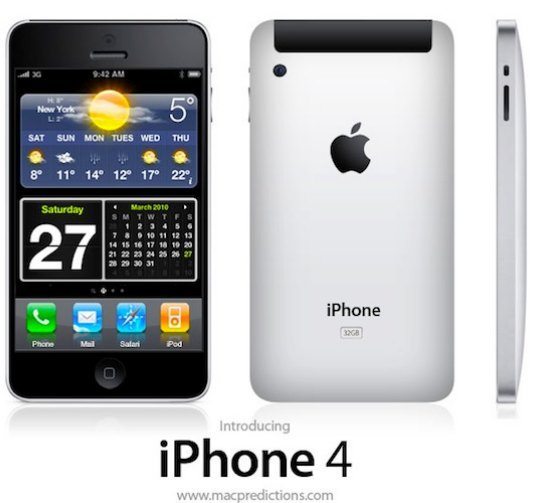iPhone 4G aka HD Mock-Up, design and details: Photo
We have seen a number of concept ideas and images to do with the new Apple iPhone 4G aka HD (call it what you may), but have to say this one via MacPredictions looks stunning.
The iPhone 4G or iPhone 4 mock-up as they call it has a sleek aluminium “unibody” enclosure, thanks Graham Bower for the image. The style basically comes from the current line-up of unibody MacBook Pros, which is a single casting of aluminium, yes metal baby to make it feel better.

Apparently specifications will include a high-resolution screen and a front-facing camera and multi-tasking seems on the cards, obviously this is a mock-up image so please do keep an open mind.
Would you like this iPhone 4G to be the final design, the one that goes into production? Please let us know in the comments area below please.
Source — Cult of Mac

Comments
4 thoughts on “iPhone 4G aka HD Mock-Up, design and details: Photo”
Isn’t the gsm radio near the bottom of the phone? I think the plastic is on the wrong end…
So, this phone is SICK. The new design is uber sexy! I love that the screen is apparently wider, and yet the overall design is seemingly thinner. Amazing. Uhhhh…. Multitasking?! Yes, please! If this turns out to be the final design, I think I’ll buy two. Chalk me up for a big “Hell yes!”
Dear username iPhone,
You, are wrong.
That is all.
The GSM and WiFi antennas on all current and previous iPhones are located at the bottom of the handset. In the original iPhone (with the aluminum body), there was a plastic strip at the bottom to facilitate transmission and reception for these antennas.
I imagine one reason the antennas were located at the bottom was to reduce the amount of RF energy transmitted close to the user's head. From the FCC's website:
The FCC's exposure guidelines specify limits for human exposure to RF emissions from hand-held mobile phones in terms of Specific Absorption Rate (SAR), a measure of the rate of absorption of RF energy by the body. The safe limit for a mobile phone user is an SAR of 1.6 watts per kg (1.6 W/kg), averaged over one gram of tissue, and compliance with this limit must be demonstrated before FCC approval is granted for marketing of a phone in the United States. Somewhat less restrictive limits, e.g., 2 W/kg averaged over 10 grams of tissue, are specified by the ICNIRP guidelines used in Europe and most other countries.